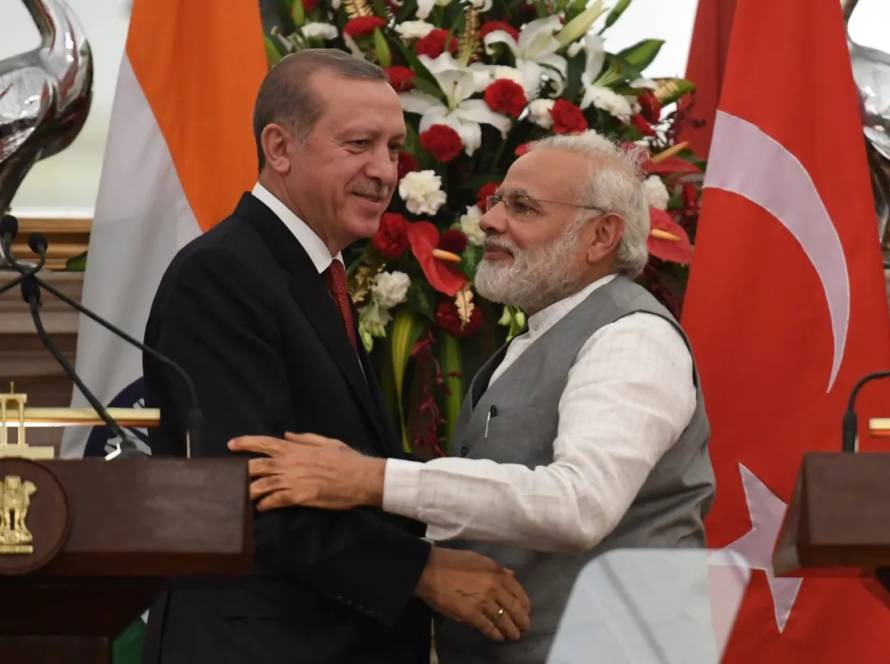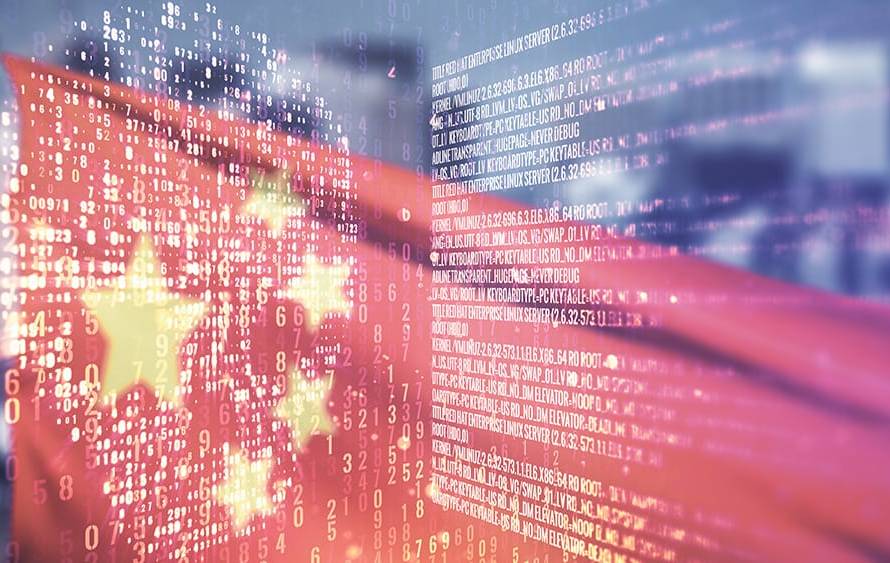By Deshani Samaragunarathna
In the contemporary landscape of the Middle East, information technology has become a potent tool for power. The region’s social and political landscapes are diversifying, reflecting significant changes in how information is disseminated, consumed, and wielded. Over the past few decades, particularly since the Arab Spring, the media landscape has transformed dramatically.
This analysis aims to explore the interplay between digital media and geopolitics of Middle East, focusing on major media outlets, the impact of social media on mobilization, and broader implications for political dynamics and international relations.
The Evolving Media Landscape
Since the Arab spring uprisings, the media landscape in the Middle East has become markedly more diverse. Trust in traditional media was gradually shifting as new voices emerged and challenged dominant narratives.
This diversification is particularly evident in the rise of commercial media models and changing audience preferences. The Saudi- and UAE-dominated media market is now contending with new entrants from Tunisia, Turkey, and Morocco, as well as established networks like Al Jazeera.
However, the region still grapples with numerous challenges: undemocratic governance, conflict and wars, social inequality, high unemployment rates, and escalating political violence. Despite these issues, the Middle East is undergoing a transformation characterized by increased engagement with information and communication technologies (ICTs). States, groups, and individuals are leveraging these tools to capitalize on new opportunities for change.
Social Media’s Role in Mobilization: The Facebook Revolution
While popular commentators calling it “Facebook revolution”, it is no secret that social media significantly transformed how people mobilized during the Arab Spring, allowing individuals to film their chants and demands on smartphones and share them with the world — unedited and uncensored.
Prior to the 2011 uprisings, widespread discontent with governments in the Arab world existed, but media freedom and organized dissent were largely restricted, leaving little room for voicing grievances. The introduction of social media changed this dynamic, enabling people to connect and coordinate effectively.
Analysts often frame the Arab Spring through key themes: prolonged tyranny, the role of technology, and the resulting turmoil, particularly concerning economic struggles and unemployment. Social media platforms like Facebook and Twitter played crucial roles in documenting government brutality and facilitating protests.
One prominent example is the grassroots movement “We Are All Khaled Said,” named after a young Egyptian tortured to death by police. This campaign unified diverse groups under a common cause and inspired similar uprisings across the region.
The #Jan25 campaign in Egypt exemplifies how digital tools enabled coordination that ultimately led to President Mubarak’s resignation. Activists shared experiences of state violence and organized protests using social media, generating solidarity and mobilizing support. More recently, the hashtag #FreePalestine has emerged, amplifying voices for Palestinian solidarity and drawing global attention to the ongoing conflict in Gaza.
This underscores the transformative power of digital media in challenging entrenched power structures and fostering collective action.
Al Jazeera: A Case Study in Media Transformation
Founded in 1996, Al Jazeera serves as a critical case study in understanding the evolution of Arab media. Initially gaining prominence for its independent coverage of contentious political issues, Al Jazeera quickly distinguished itself from traditional State-controlled media by providing a platform for diverse voices, including opposition figures and grassroots movements.
This role became particularly significant during the Arab Spring, when the network’s coverage shaped public perception and influenced international responses.
For instance, during the 2011 uprisings in Egypt, Al Jazeera’s live broadcasts and comprehensive reporting attracted global attention to the protests against President Mubarak. The network framed these events as a struggle for democracy, resonating with both domestic and international audiences.
However, its portrayal has sparked controversy, with critics like content creator Nas Daily accusing Al Jazeera of maintaining a dual narrative in its English and Arabic broadcasts.
In 2020, Nas Daily specifically criticized Al Jazeera for spreading what he termed “fake news,” while Al Jazeera initially accused him of being part of Israeli government propaganda. Nas pointed out the stark differences between Al Jazeera’s English and Arabic content, emphasizing that “if you don’t speak Arabic, you will never notice this stuff.”
Competing media dynamics and Geopolitical rivalries
In contrast, Al Arabiya, established in 2003 with close ties to the Saudi monarchy, serves as a rival to Al Jazeera. While it claims a professional stance against extremism, it is often viewed as a Saudi propaganda outlet.
The geopolitical rivalry between the two networks became pronounced during the 2017 Gulf crisis, when Saudi Arabia, the UAE, and Bahrain severed ties with Qatar, accusing it of supporting terrorism—a narrative amplified by Al Arabiya. Al Jazeera, however, portrayed Qatar as a victim of aggression.
This competition also reflects broader regional dynamics. Qatar’s support for movements like the Arab Spring and its associations with groups such as the Muslim Brotherhood have put it at odds with Saudi Arabia and the UAE, which see these as threats to their influence. The media thus not only shapes public perception but also acts as an extension of state power, complicating the already intricate geopolitical landscape of the Middle East.
Content analysis of their flagship programs — Al-Hasad (The Harvest) on Al Jazeera and Panorama on Al Arabiya — reveals significant differences in framing. Al Jazeera’s coverage portrayed Qatar as an innocent party under attack, while Al Arabiya framed Qatar as a key supporter of terrorism.
Video Games and Cultural Dynamics
The video gaming phenomenon is increasingly intertwining with cultural dynamics in the Middle East. According to a report on the gaming market in Asia and the Middle East by consultants Niko Partners, around 65 million players and a market value of USD 1.7 billion in 2021, the Arab gaming industry is projected to reach USD 3.12 billion by 2025.
In Saudi Arabia, the vibrant nightlife now includes not just neon-lit streets but also a burgeoning gaming scene, positioning the country as a key player in the global USD 300 billion video games and e-sports industry.
This sector transcends traditional entertainment, driving new tourism trends, social innovation, and cultural exchange. Saudi Arabia, under the leadership of Crown Prince Mohammed bin Salman, has embraced this potential, launching a National Gaming and Esports Strategy as part of its Vision 2030 initiative. This plan aims to diversify the economy and position Saudi Arabia as a leader in the gaming industry.
However, there are criticisms surrounding these investments. Skeptics highlight Saudi Arabia’s history of human rights abuses and efforts to suppress dissent, suggesting that the gaming push may serve as a form of “sportswashing,” similar to its strategies in other sectors, such as the LIV Golf series.
Youth Engagement and Cybersecurity
The youth in the Middle East, characterized by their tech-savvy nature, are playing a pivotal role in shaping political conversations through digital media. A recent Arab Youth Survey found that around 60% of young people in the region turn to social media as their main news source. This shift has given them fresh avenues to voice their concerns and aspirations for change.
But it’s not all straightforward. The intersection of digital engagement and gender roles is particularly intricate. As women and other activists increasingly take to online platforms, authoritarian governments are tightening their grip. They have learnt to monitor and crack down on these forms of dissent, often detaining bloggers and journalists who speak out. Take the case of Raif Badawi, for instance; his severe punishment for online activism call attention to the risks many face.
On top of that, this vibrant digital landscape comes with significant cybersecurity challenges. Governments frequently implement strict measures to surveil and control online discussions. The Egyptian government’s crackdown on social media during the 2019 protests is a stark reminder of how state power can stifle dissent in our digital age. It raises important questions about finding a balance between security and freedom of expression.
Media and Cultural Exchange
The competition among media outlets transcends national borders, influencing regional rivalries and shaping international perceptions. Narratives propagated by various channels align with broader geopolitical interests, affecting foreign policy decisions. The 2017 Qatari diplomatic crisis illustrates how media narratives can influence international diplomatic relations, as Qatar faced isolation from Saudi Arabia and its allies.
Additionally, the global focus on the Middle East has intensified with the rise of digital media. Social media platforms amplify regional conflicts, impacting foreign engagement. The widespread sharing of images and stories during conflicts, such as those in Syria and Yemen, has galvanized international activism, leading to calls for humanitarian intervention and shifts in foreign policy.
The burgeoning digital economy in the Middle East also presents both opportunities and challenges for geopolitical relations. Nations are increasingly investing in technology sectors to attract foreign investment and foster innovation. For instance, Dubai has emerged as a global tech hub, enhancing the region’s strategic importance on the world stage.
Moreover, digital media facilitates cultural exchange, though it also provokes tensions over identity and values. Initiatives like Netflix’s “Dubai Bling” highlight the region’s diverse cultural landscape while sparking debates about representation and authenticity. This intersection of cultural narratives in digital media contributes to ongoing discussions about identity and belonging in a rapidly evolving socio-political context.
The Role of the Arab Diaspora and Media Preferences
Another key aspect to explore on digitization and geo politics is the role of Arab diaspora in the media landscape, often favoring Arabic-language media over Western outlets. This preference stems from a desire to maintain cultural connections and stay informed about developments in their home countries.
Many in the diaspora seek out Arab media to access narratives that resonate with their experiences and provide a more nuanced understanding of regional issues. Arabic media serves as a vital link for expatriates, fostering a sense of community and shared identity, even when physically distant from their homeland.
Furthermore, the diaspora is increasingly active in advocacy and activism, using digital platforms to voice concerns and mobilize support for political causes. For those in exile, Arab media not only informs but also empowers, enabling them to participate in discussions about democracy, human rights, and social justice in their home countries.
This engagement highlights the crucial role of media in sustaining cultural ties and facilitating activism, as diaspora communities leverage their platforms to amplify voices and advocate for change, both locally and internationally.
The relationship between digital media and geopolitics in the Middle East is intricate and dynamic. As digital platforms evolve, they play an increasingly significant role in shaping public discourse, influencing political dynamics, and impacting international relations.
While digital media offers opportunities for greater engagement and democratization, it also presents challenges related to misinformation, censorship, and regional rivalries. Understanding this complex landscape is essential for navigating the future of the Middle East in an increasingly interconnected and digital world.
Deshani Dewmini Samaragunarathna graduated with a Bachelor of Science (BSc) in Strategic Studies and International Relations from the Faculty of Defense and Strategic Studies at the General Sir John Kotelawala Defence University. In 2022, She represented Sri Lanka as a Global UGRAD Scholar at the University of Alabama in the US. Geopolitics, history, public diplomacy, and soft power are among her research interests.
Factum is an Asia-Pacific focused think tank on International Relations, Tech Cooperation, Strategic Communications, and Climate Outreach accessible via www.factum.lk.
The views expressed here are the author’s own and do not necessarily reflect the organization’s.


